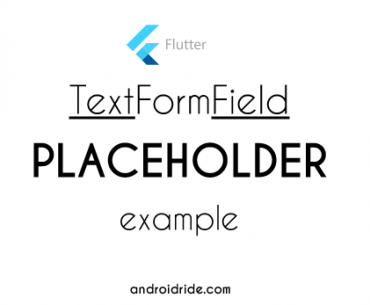
In this post, you will learn how to make a vertical divider in Flutter.
let’s create a simple one.
Contents
Simple Vertical Divider Example

If you check the code, you can find out that VerticalDivider is just a SizedBox. You can use Vertical Divider with horizontal ListView.
- Align widget is used to align the Container to top of the App.
- In this example, divider height depends on the Container height.
- Here color of the divider is black.
- Given 20 empty space above the divider.
- Divider width is also 20.
import 'package:flutter/material.dart';
void main() => runApp(MyApp());
/// This is the main application widget.
class MyApp extends StatelessWidget {
static const String _title = 'Flutter Vertical Divider Example';
@override
Widget build(BuildContext context) {
return MaterialApp(
title: _title,
home: Scaffold(
appBar: AppBar(title: const Text(_title)),
body: MyStatelessWidget(),
),
);
}
}
class MyStatelessWidget extends StatelessWidget {
@override
Widget build(BuildContext context) {
return Align(
alignment: Alignment.topCenter,
child: Container(
height: 80,
padding: const EdgeInsets.all(10),
child: VerticalDivider(
color: Colors.black,
thickness: 3,
indent: 20,
endIndent: 0,
width: 20,
),
),
);
}
}
- Remove Debug Banner in Flutter
- How To Center AppBar Title in Flutter?
- Amazing Flutter Notes Taking App Using ImagePicker, Provider, Sqflite.
Properties
Color color : Color of the vertical divider line.
double endIndent: total empty space under the divider.
double indent: sum of empty space on top of the divider.
double thickness: Thickness of the divider
double width: Width of the divider.
Vertical Divider Example 2

Let’s make a red color divider inside Row widget. Yes, just like above image.
- Row widget aligns Text widgets.
- Here VerticalDivider’s height depends on the SizedBox’s height.
import 'package:flutter/material.dart';
void main() => runApp(MyApp());
class MyApp extends StatelessWidget {
static const String _title = 'Flutter Vertical Divider Example 2';
@override
Widget build(BuildContext context) {
return MaterialApp(
title: _title,
home: Scaffold(
appBar: AppBar(title: const Text(_title)),
body: MyStatelessWidget(),
),
);
}
}
class MyStatelessWidget extends StatelessWidget {
@override
Widget build(BuildContext context) {
return Padding(
padding: EdgeInsets.all(8.0),
child: Row(
crossAxisAlignment: CrossAxisAlignment.center,
mainAxisAlignment: MainAxisAlignment.center,
children: [
Text('May 1, 2021'),
SizedBox(
height: 25,
child: VerticalDivider(
color: Colors.red,
thickness: 2,
indent: 5,
endIndent: 0,
width: 20,
),
),
Text('Saturday'),
],
),
);
}
}
Vertical Divider Using Container

In this example, you will not use VerticalDivider() widget, but you will use Container. It’s really simple to make.
- Here Align widget used to Align the Padding and VerticalDivider.
- Depends on Container properties values, you can make your Divider.
- You can also use other widgets, Just like Container
import 'package:flutter/material.dart';
void main() => runApp(MyApp());
class MyApp extends StatelessWidget {
static const String _title = 'Vertical Divider Using Container';
@override
Widget build(BuildContext context) {
return MaterialApp(
title: _title,
home: Scaffold(
appBar: AppBar(title: const Text(_title)),
body: Align(
alignment: Alignment.topCenter,
child: Padding(
padding: const EdgeInsets.all(8.0),
child: VerticalDividerWidget(),
),
),
),
);
}
}
class VerticalDividerWidget extends StatelessWidget {
@override
Widget build(BuildContext context) {
return Container(
height: 40,
width: 3,
color: Colors.brown,
);
}
}
That’s all for now. If you like this post, please share it with your family and Friends. If there is any doubts, please comment.
Thank you for scrolling.

